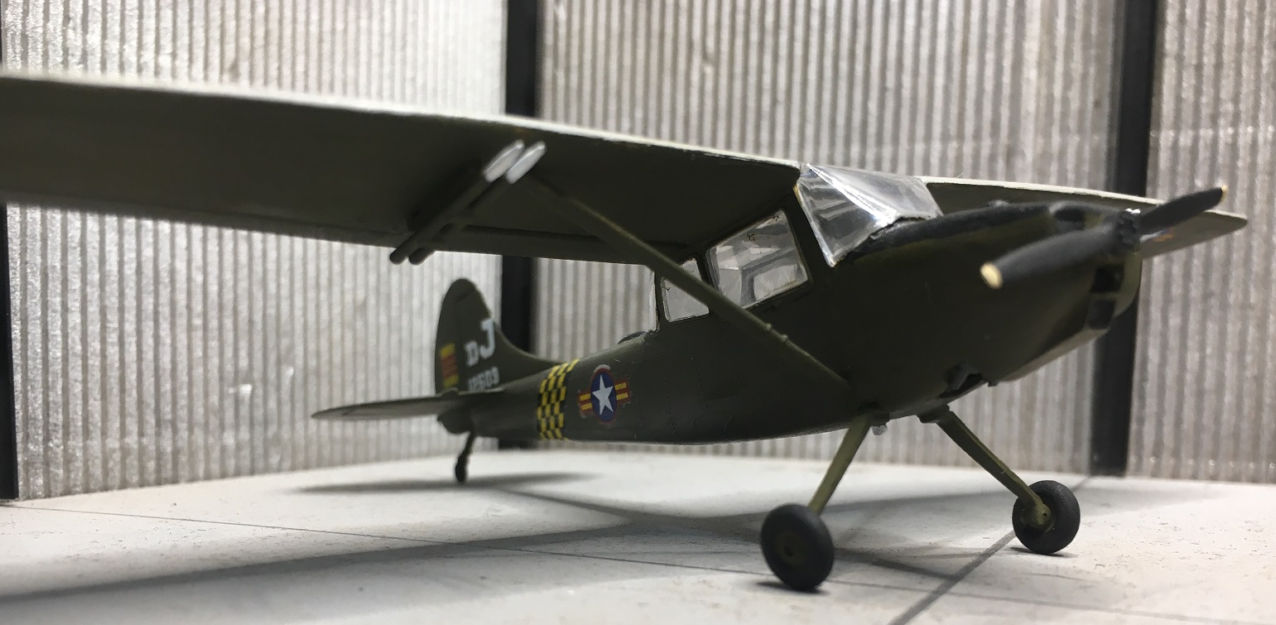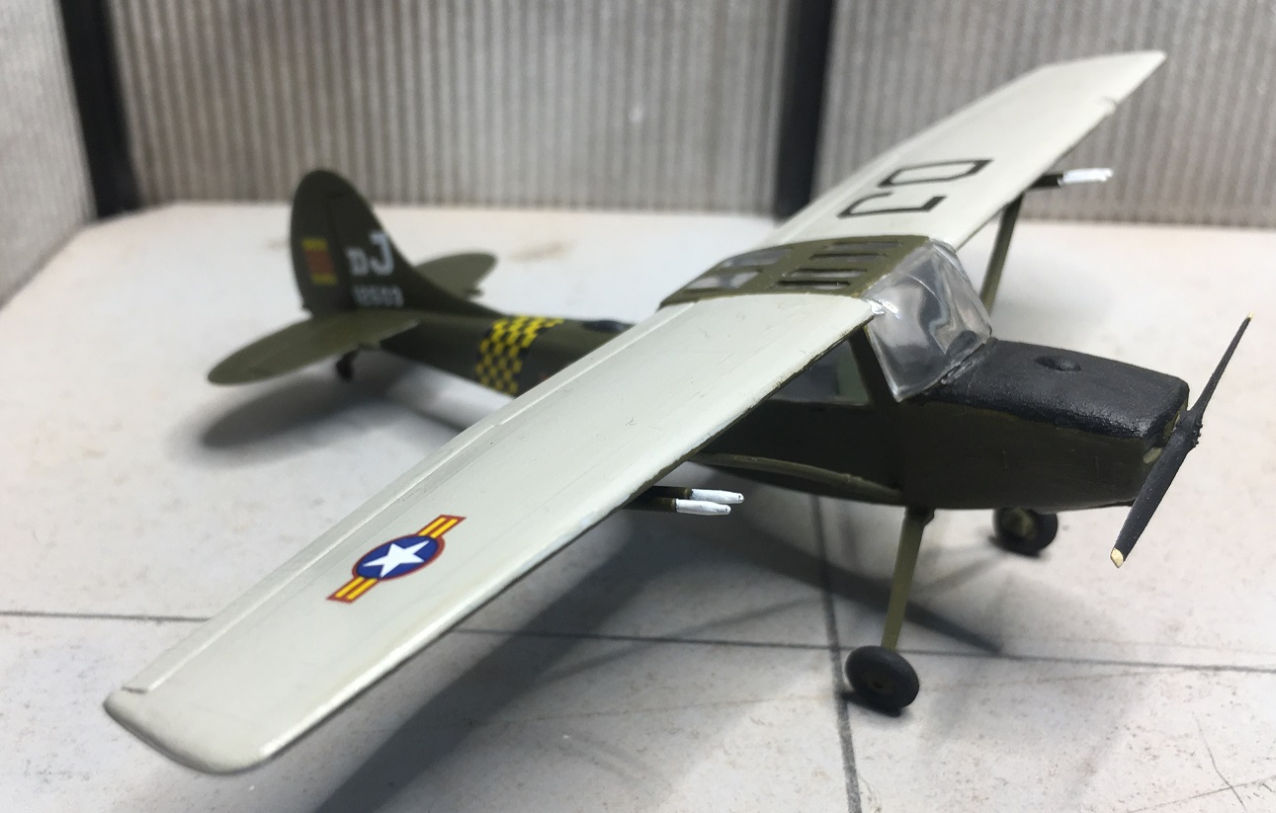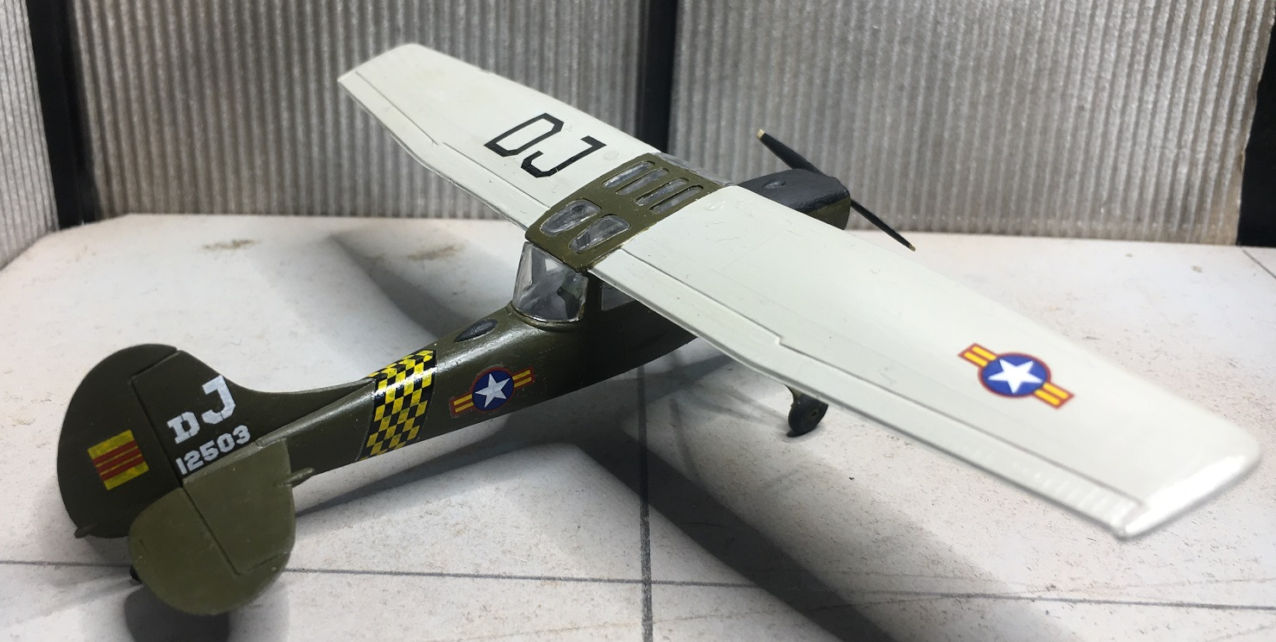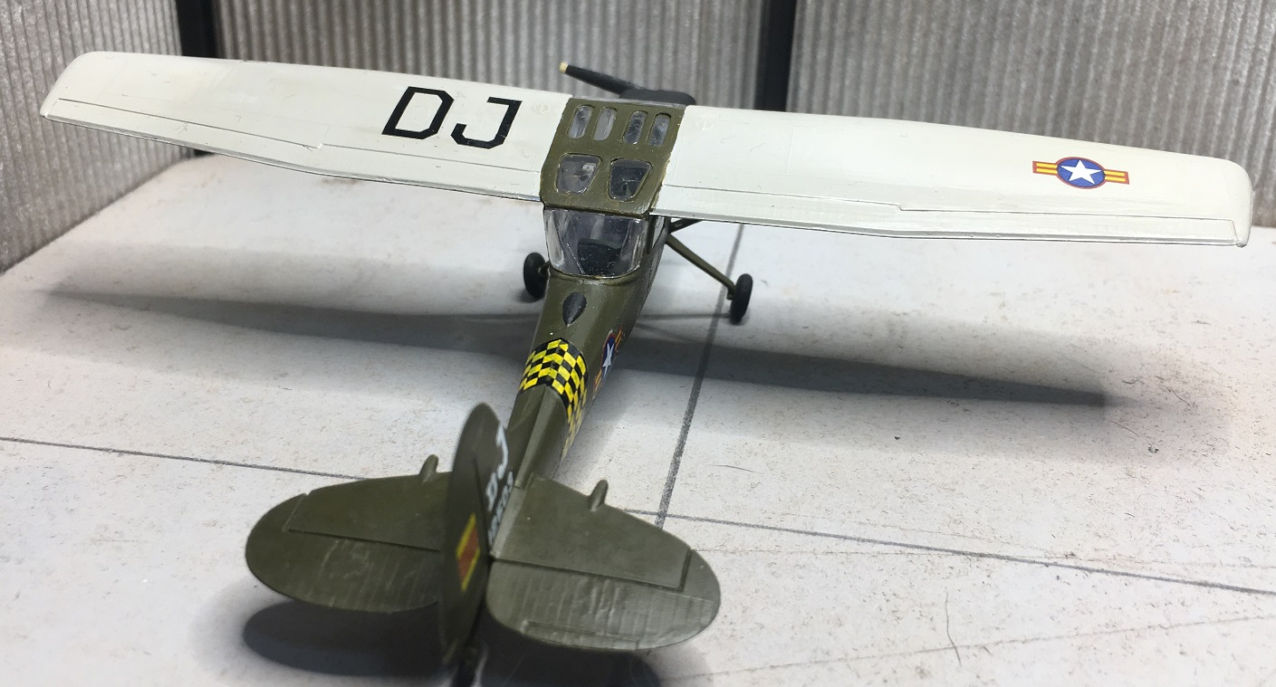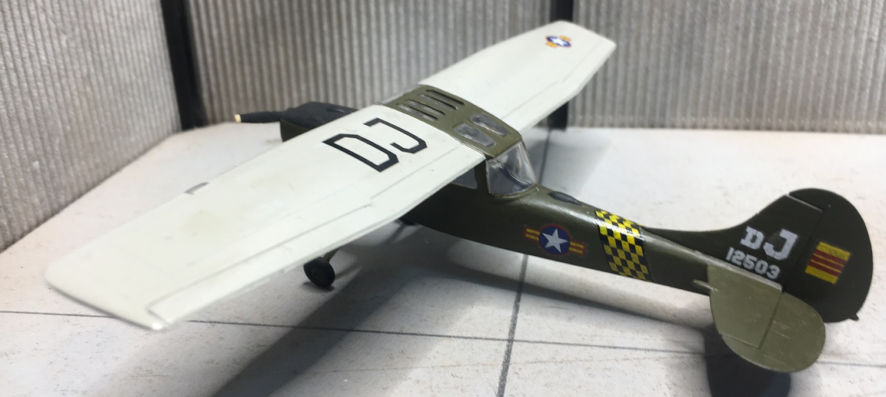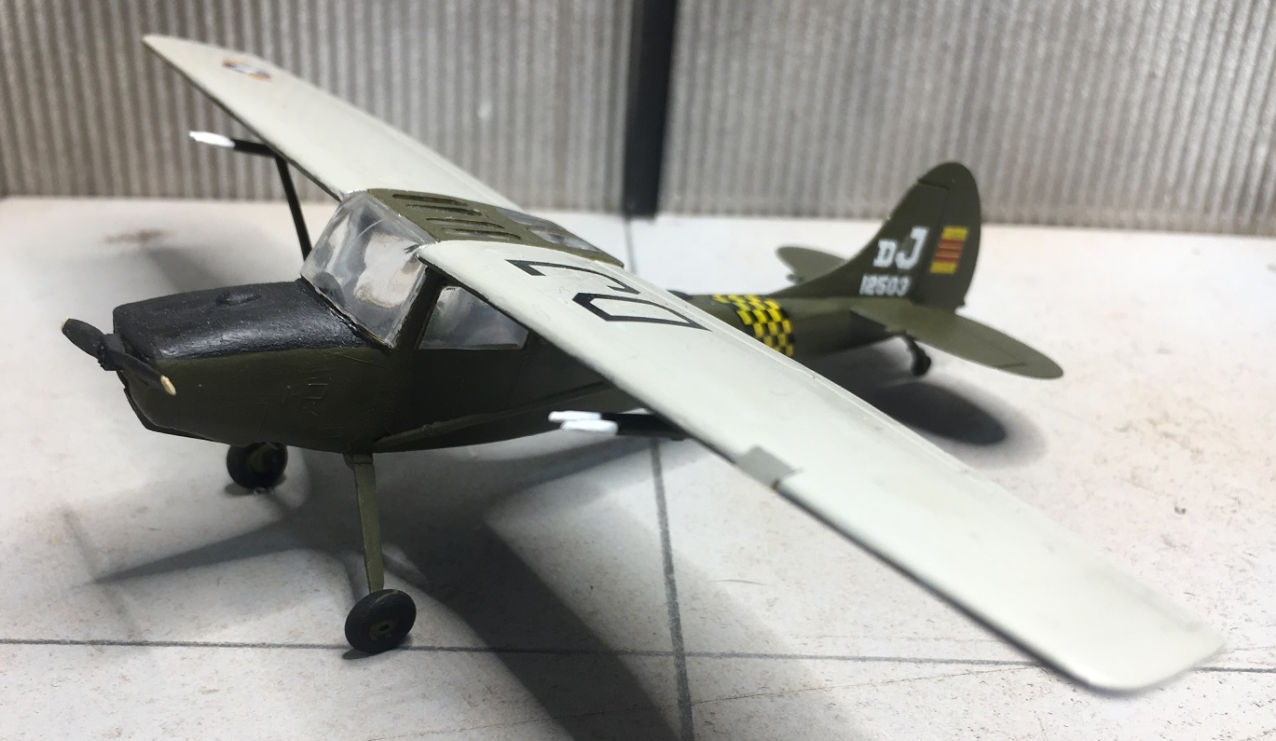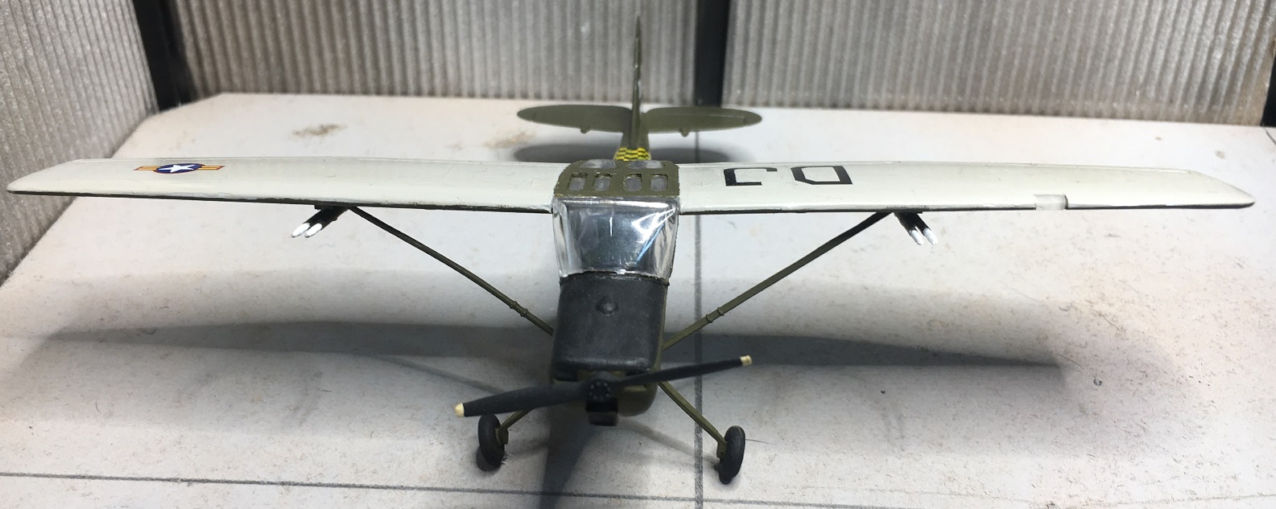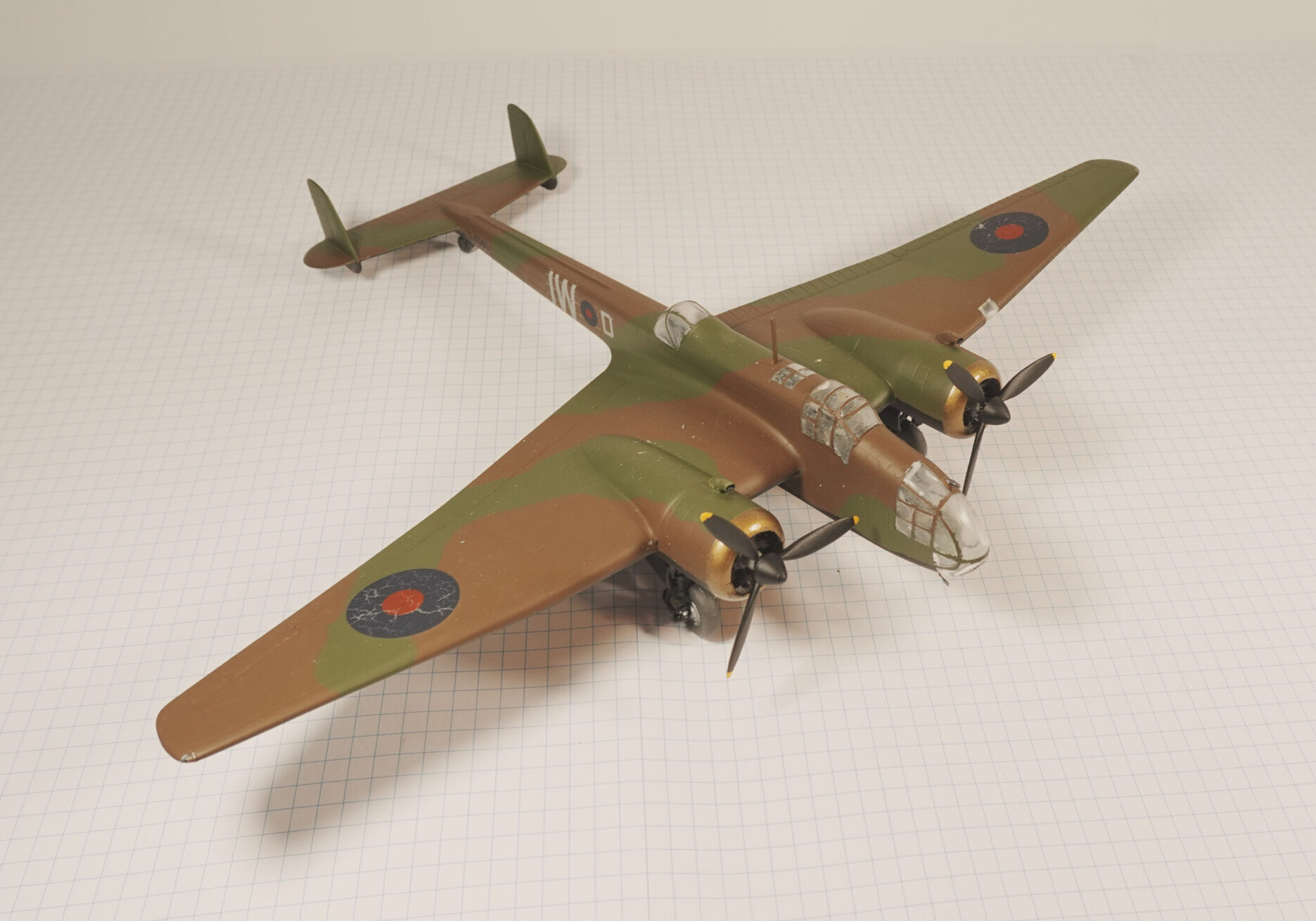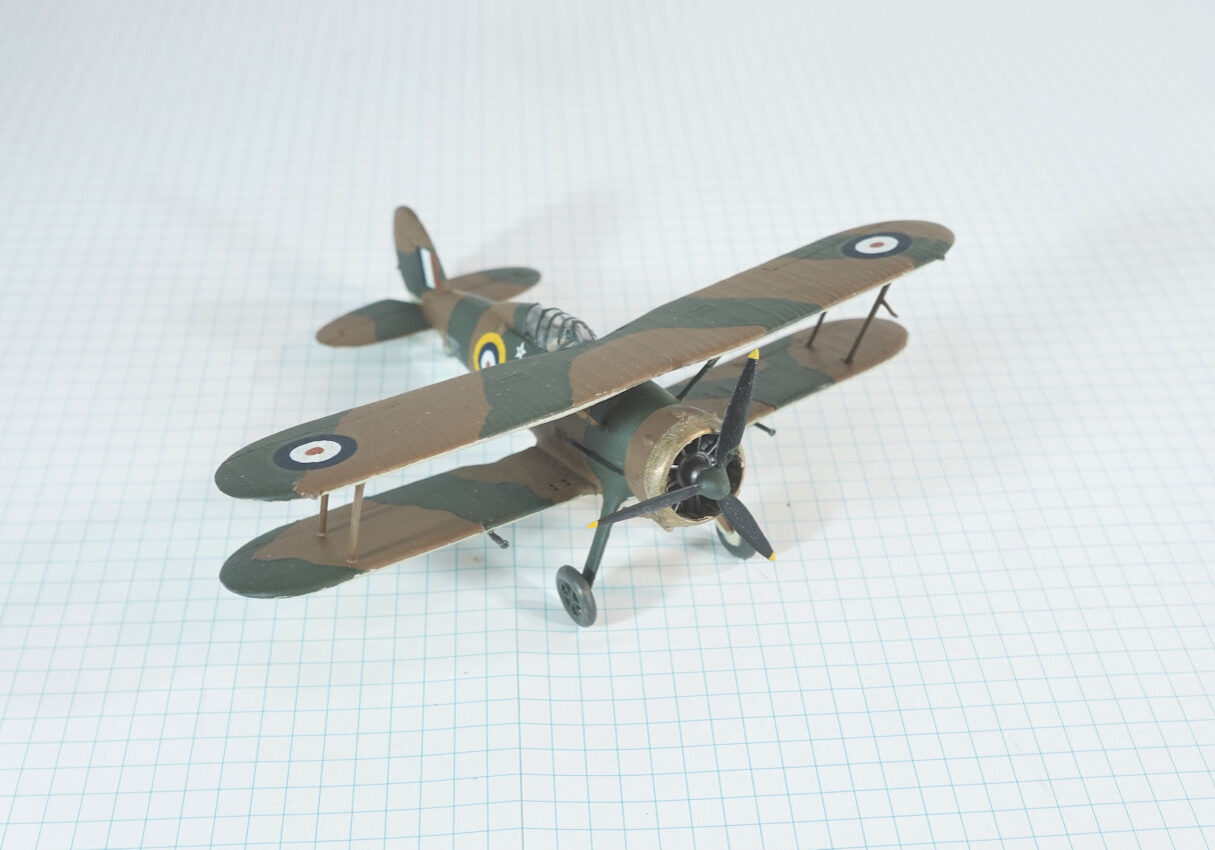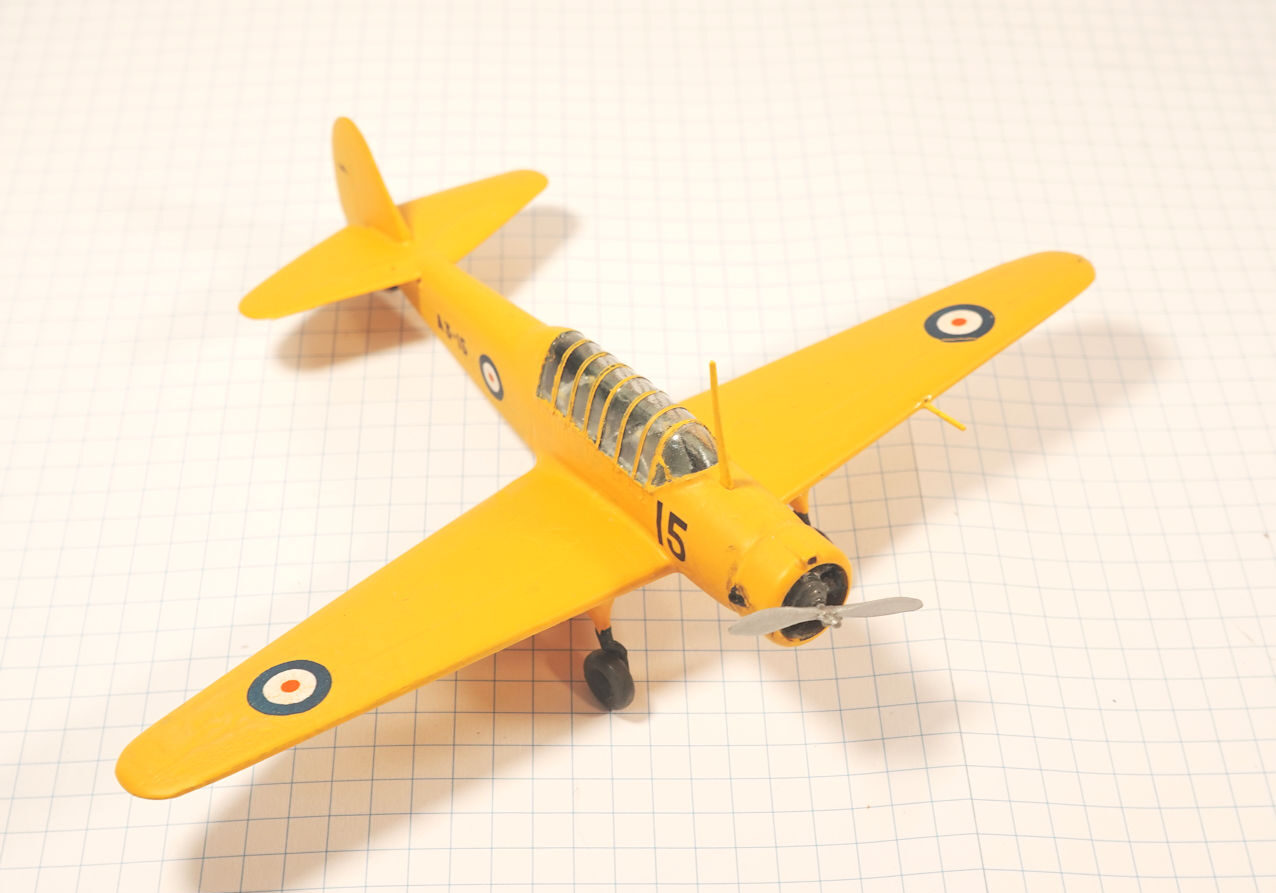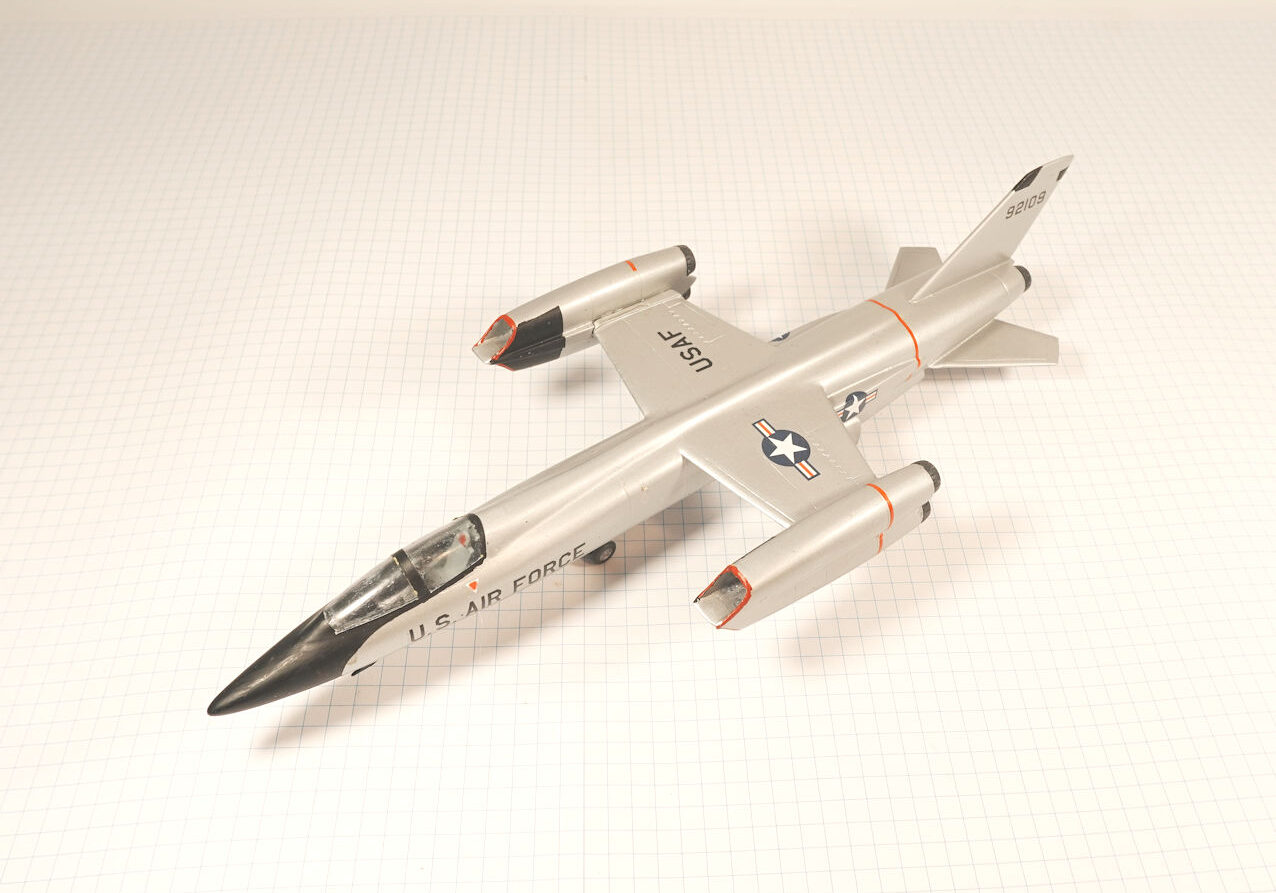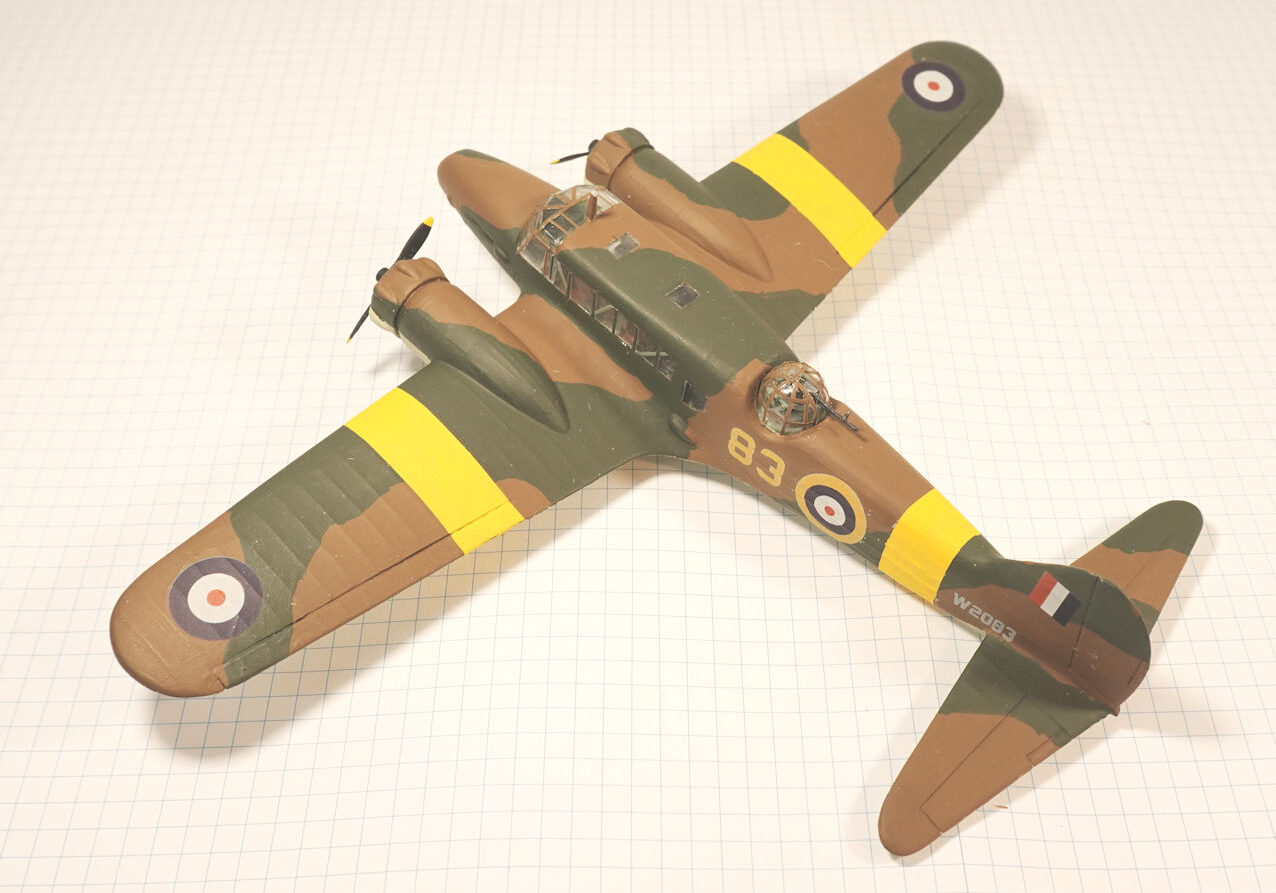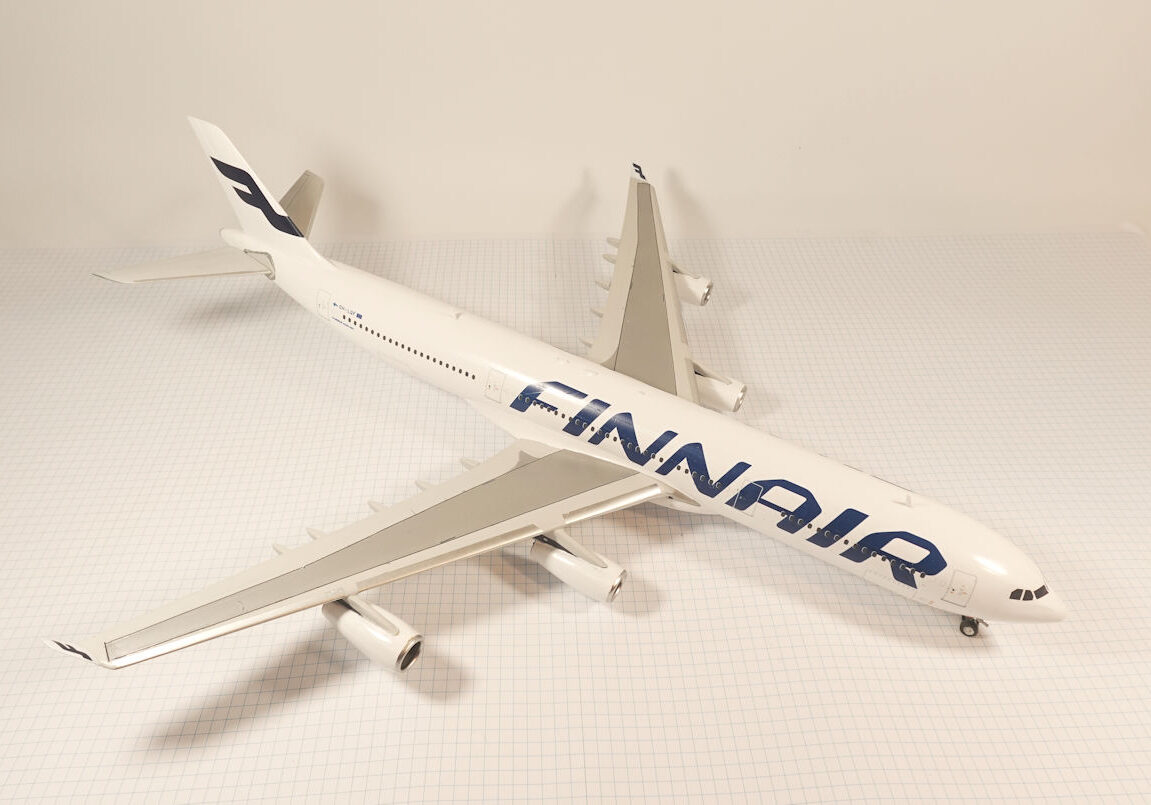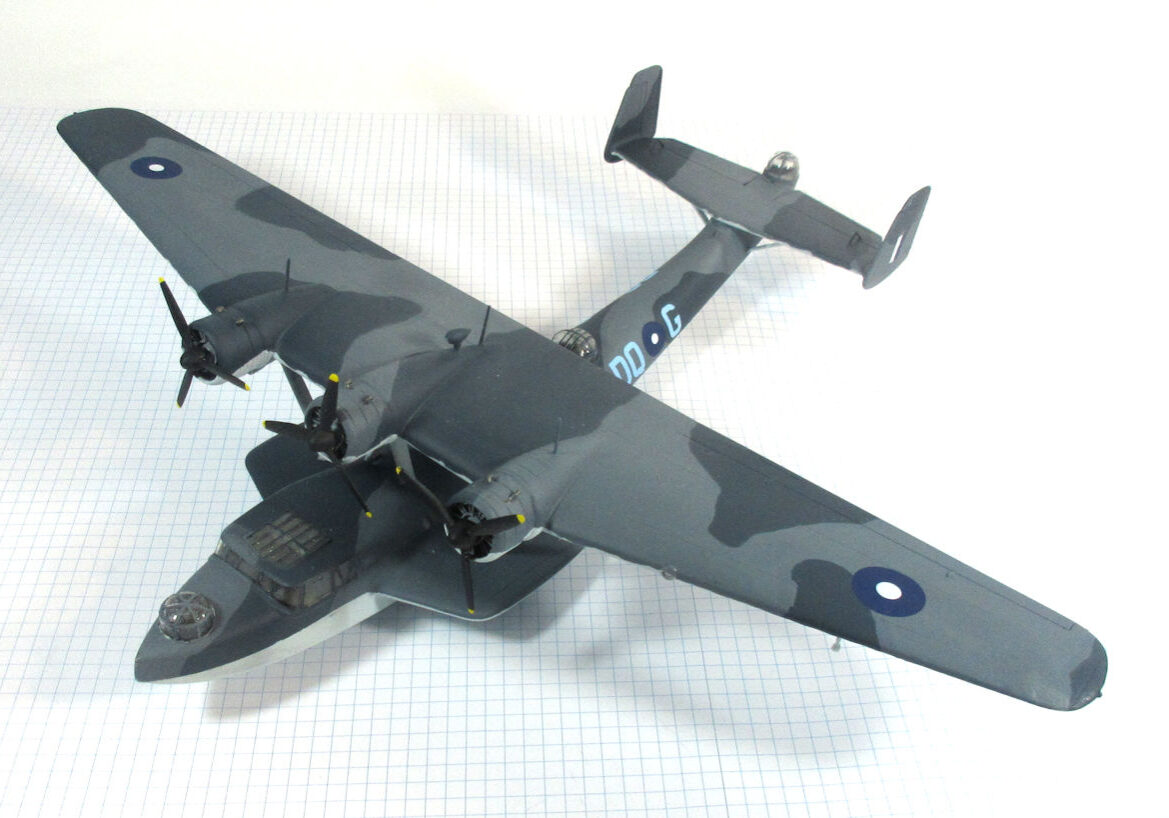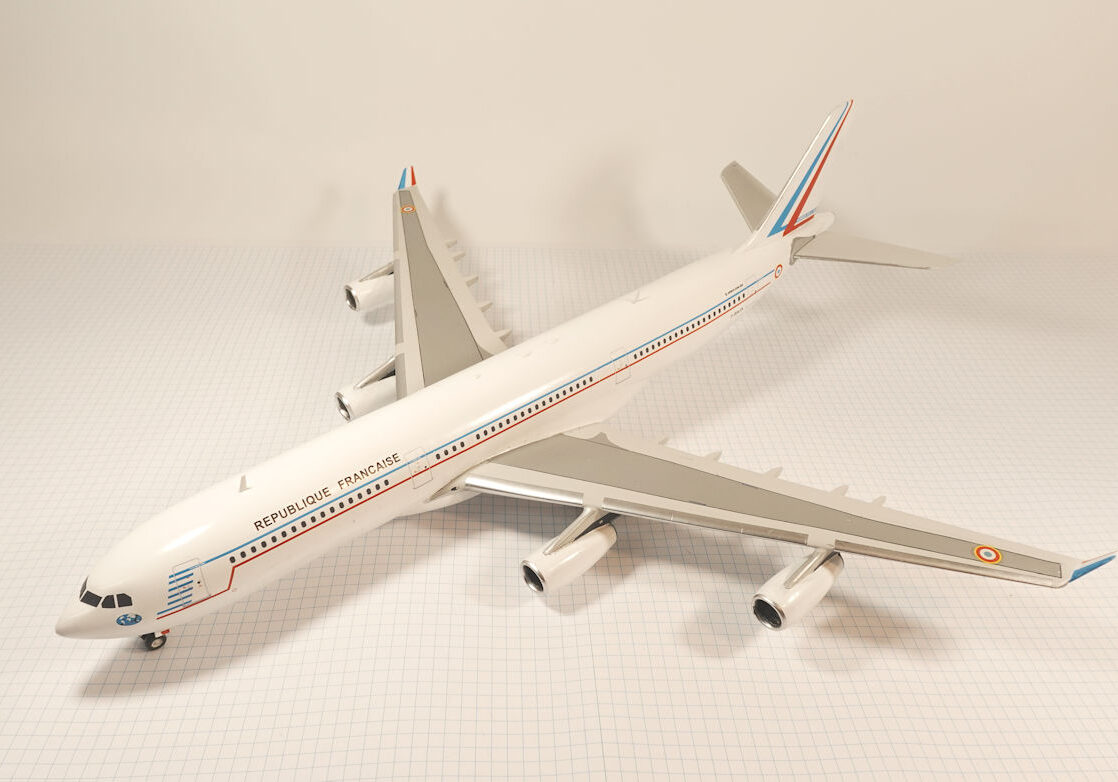History
The Bird dog was developed during the late 40s to replace the aging spotter aircraft from Stinson and Piper that were in use during WW2. The Bird dog was fully metal skinned unlike its fabric covered predecessors.
The Bird Dogs primary role was artillery spotting beginning service in 1950 and being used in this role in both Korean and Vietnam wars.
It had good STOL performance and found employment as a Liaison aircraft and for clandestine ops.
In 1964 a change in US doctrine transferred all fixed wing aircraft to the Airforce.
Bird dogs were used as forward air controllers by the USAF. The Bird dog would fly low and slow observing for enemy fire and directing attacks. 469 were lost due to enemy action.
Bird dogs were highly valued and remained in service until 1974 despite being replaced by the O-2 Skymaster and O-10 Bronco.
Many were sold to civil operators. In 209, 330 aircraft were listed on the US Federal register.
Airfix 1/72 kit completed by Steve Pulbrook in 2018.
